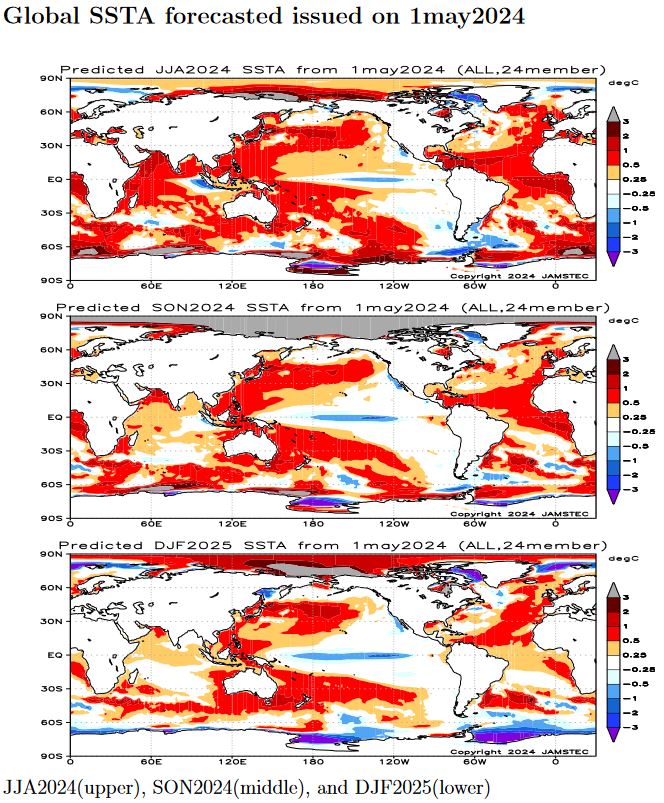Today Through the Fourth Friday (22 to 28 days) Weather Outlook for the U.S. and a Six-Day Forecast for the World: posted May 25, 2024
This article focuses on what we are paying attention to in the next 48 to 72 hours. The article also includes weather maps for longer-term U.S. outlooks and a six-day World weather outlook which can be very useful for travelers.
First the NWS Short Range Forecast. The afternoon NWS text update can be found here after about 4 p.m. New York time but it is unlikely to have changed very much from the morning update. The images in this article automatically update.
Short Range Forecast Discussion
NWS Weather Prediction Center College Park MD
Sat May 25 2024
Valid 12Z Sat May 25 2024 – 12Z Mon May 27 2024…Dangerous severe weather threat forecast across parts of the
central/southern Plains through tonight before the potential for strong
storms shift to the mid-Mississippi and Ohio valleys on Sunday……Extreme fire weather expected for south-central New Mexico with
critical fire weather throughout much of the southern Rockies/High Plains
today……Simmering heat continues across South Texas, the Gulf Coast, and
southern Florida through Memorial Day…The start of this Memorial Day weekend will feature yet another round of
severe weather impacting the central United States as the next storm
system strengthens across the central Plains. A textbook Great Plains
severe weather setup is expected as a warm front lifts to the central
Plains and middle Mississippi Valley while a sharp dryline extends south
of the low into the southern Plains. Discrete supercells are anticipated
to develop this evening in response to an ejecting shortwave out of the
Rockies as aforementioned surface boundaries provide a focus for
developing thunderstorms. A few supercells may be capable of intense
tornadoes, with giant hail and destructive winds also expected. By
tonight, thunderstorms are expected to merge into clusters and potentially
bow echos as they push eastward towards the Ozarks. The Storm Prediction
Center has issued a Moderate Risk (level 4/5) for severe thunderstorms in
parts of Kansas, Oklahoma, and far southwest Missouri. Additionally,
storms are expected to contain intense rainfall rates that could lead to
scattered instances of flash flooding from the central/southern Plains to
the mid-Mississippi Valley into tonight. The low pressure system and
associated storminess are expected to shift eastward on Sunday into
portions of the Midwest and Ohio Valley. Damaging wind gusts are the most
likely hazards as a complex of thunderstorms progress from Missouri to
Kentucky, as well as the possibility of flash flooding, hail, and a few
tornadoes. The Memorial Day finale for this spring storm system will
impact the eastern U.S. on Monday as low pressure swings into the Great
Lakes and a strong cold front extends along the Appalachians. Showers and
storms may dampen outdoor barbecues, while also containing frequent
lighting, have rain, and gusty winds. Residents and visitors should remain
weather aware this holiday weekend and have multiple ways of receiving
warnings.West of the dryline today throughout the southern High Plains and southern
Rockies will exist extremely critical fire weather conditions. Low
relative humidity, gusty winds, and dry vegetation could lead to any newly
formed fires to spread rapidly. Red Flag Warnings span throughout all of
New Mexico, southeast Arizona, western Texas, and the western Oklahoma
Panhandle.The temperature outlook for this weekend includes above average
temperatures leading to a summer-like feel for much of the eastern U.S.,
Mid-South, and central/southern Plains as heat also begins to build back
into the West by Memorial Day. Cooler temperatures are forecast to remain
over the Rockies, Northwest, and north-central United States. Heat will
reach oppressive levels across South Texas, the Gulf Coast, and southern
Florida, with heat indices into the triple digits and the potential for
daily record highs. Excessive Heat Warnings remain in effect across South
Texas due to heat indices rising to around 115 degrees, which could be
dangerous for those spending extended amounts of time outdoors.
















